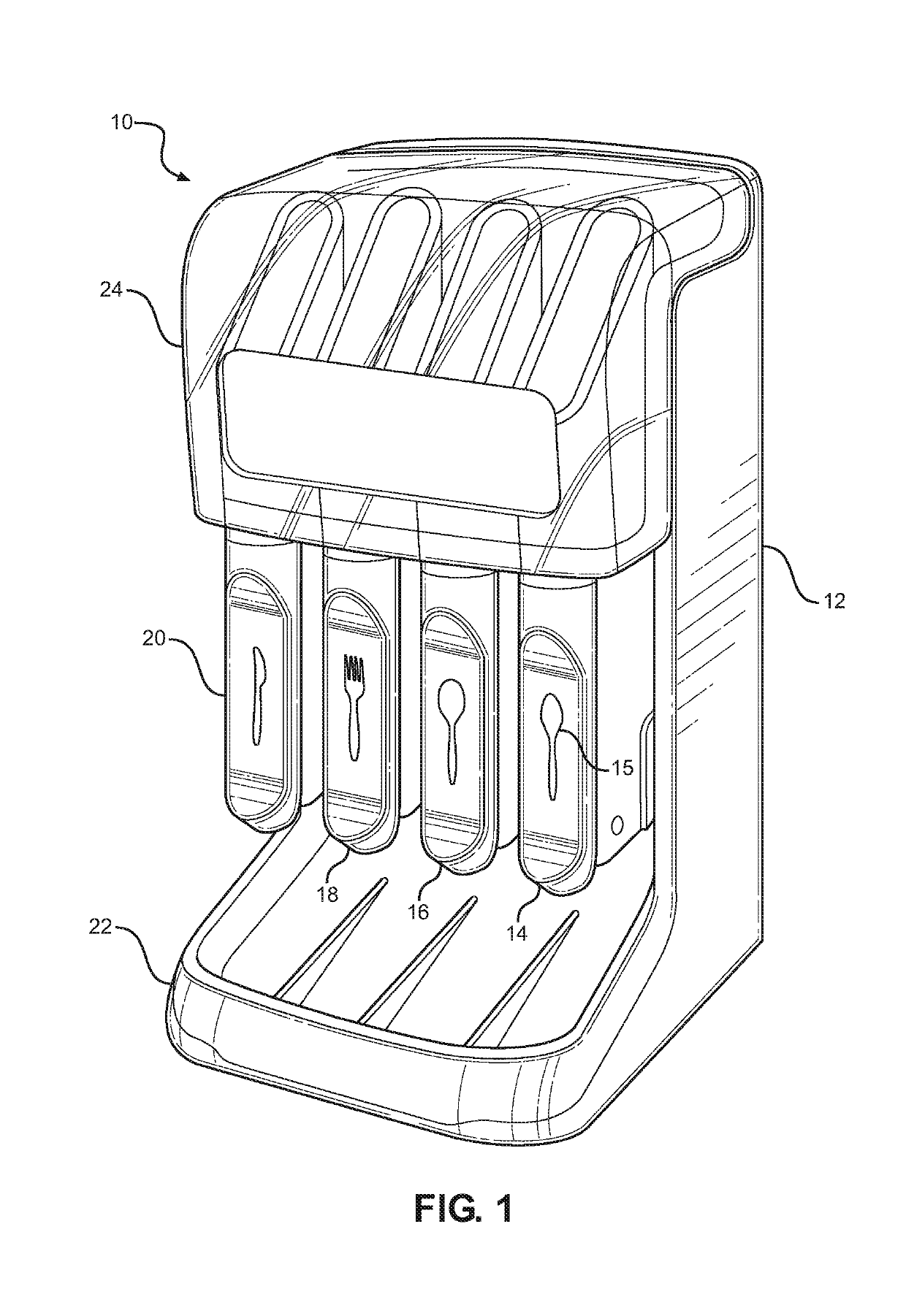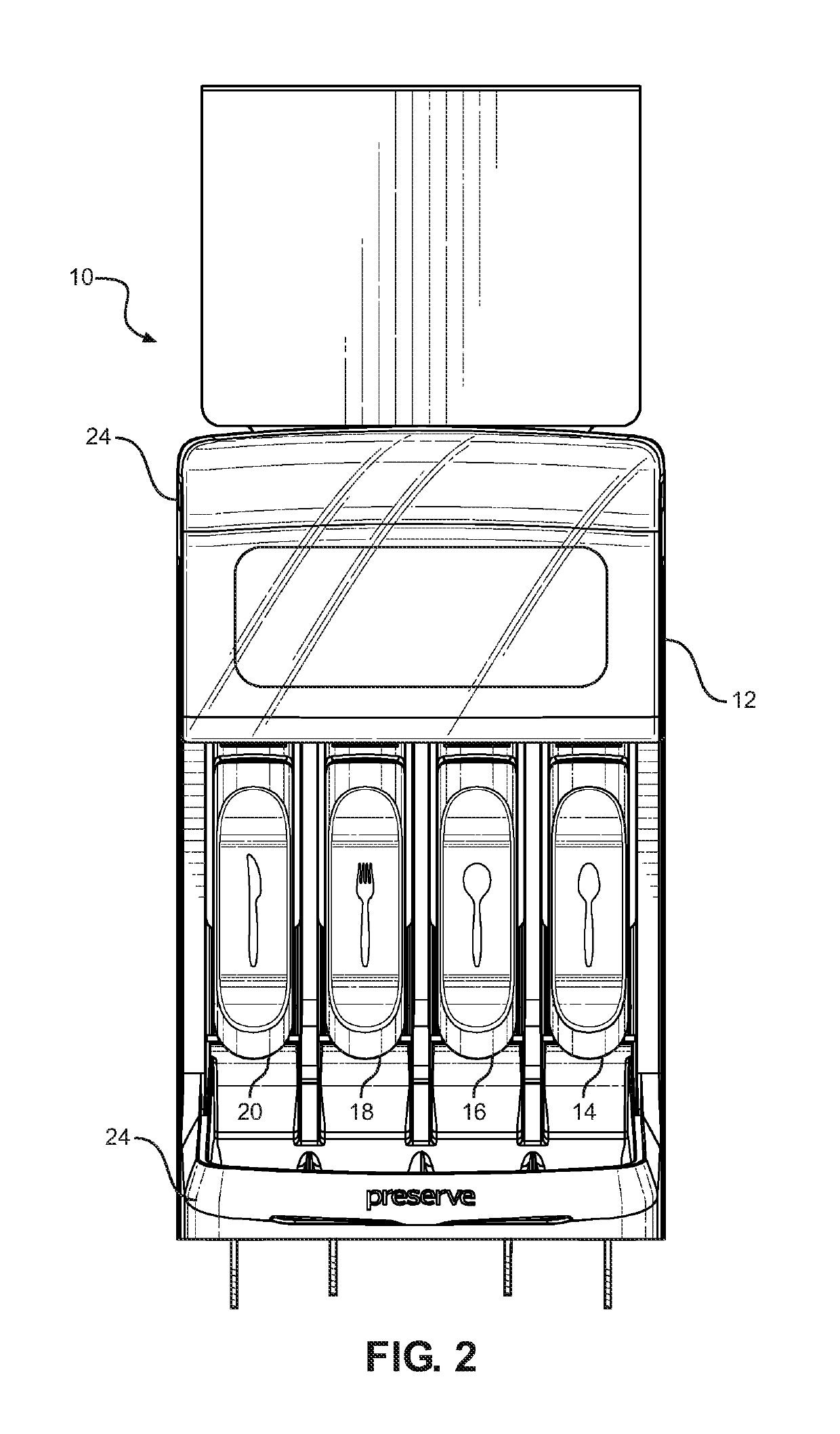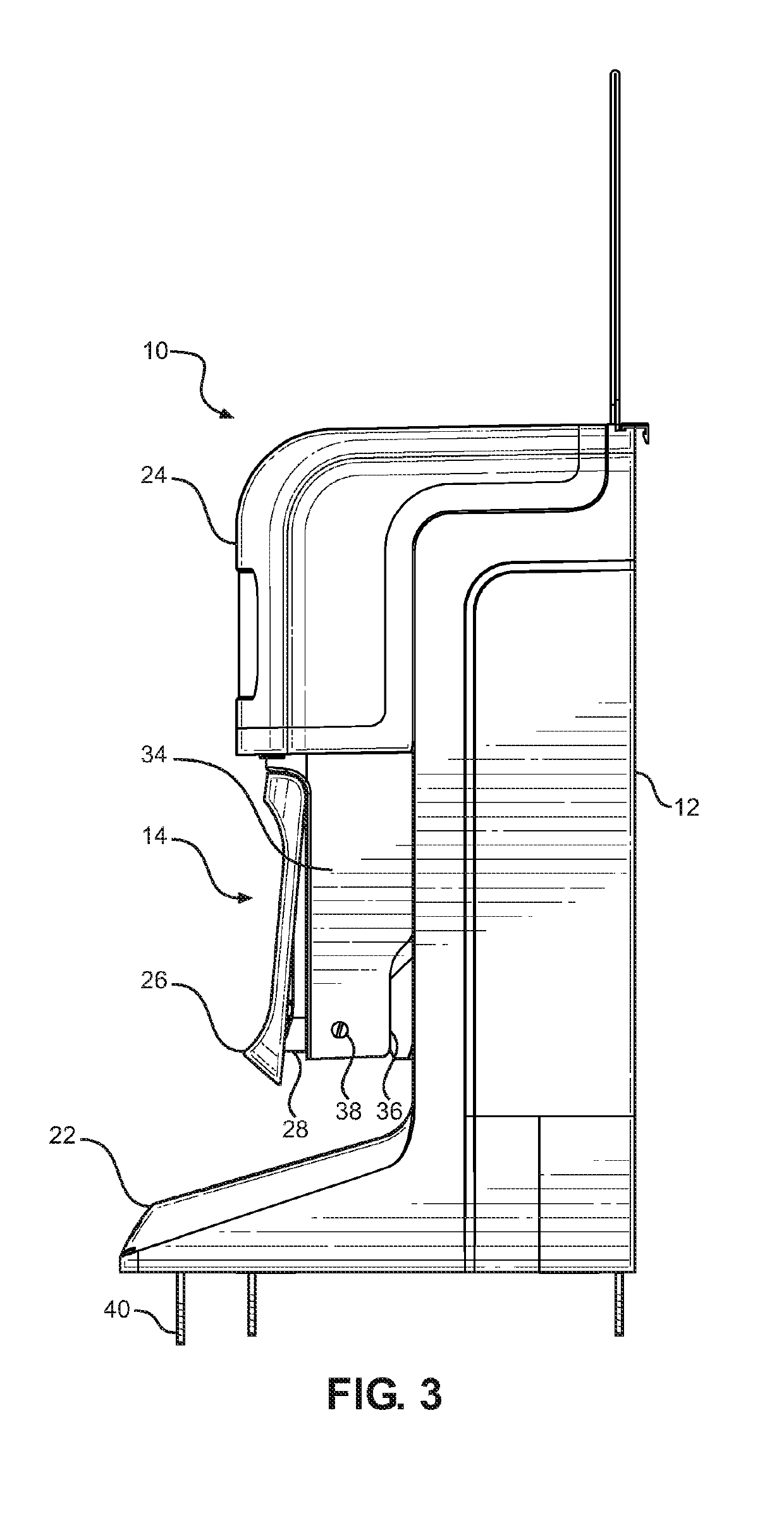Cutlery dispenser
a dispenser and cutlery technology, applied in the field of cuttinglery dispensers, can solve the problems of utensils exposed not only to airborne contaminants but also to contamination, and components are typically unused and simply discarded, and achieve the effect of efficient and reliable operation
- Summary
- Abstract
- Description
- Claims
- Application Information
AI Technical Summary
Benefits of technology
Problems solved by technology
Method used
Image
Examples
Embodiment Construction
[0057]The utensil dispenser disclosed herein is subject to a wide variety of embodiments. However, to ensure that one skilled in the art will be able to understand and, in appropriate cases, practice the present invention, certain preferred embodiments of the broader invention revealed herein are described below and shown in the accompanying drawing figures.
[0058]Looking more particularly to the drawings, a utensil dispenser according to the disclosed invention is indicated generally at 10 in FIGS. 1 and 2. There, the utensil dispenser 10 is founded on a main housing 12. The housing 12 retains a plurality of utensil dispensing chambers 14, 16, 18, and 20. Representations 15 indicative of the utensils to be retained are disposed on each of the dispensing chambers 14, 16, 18, and 20.
[0059]In the depicted embodiment of FIGS. 1 and 2, the dispensing chambers 14, 16, 18, and 20 are respectively constructed for the retention and dispensing of cutlery, specifically teaspoons, soup spoons, ...
PUM
 Login to view more
Login to view more Abstract
Description
Claims
Application Information
 Login to view more
Login to view more - R&D Engineer
- R&D Manager
- IP Professional
- Industry Leading Data Capabilities
- Powerful AI technology
- Patent DNA Extraction
Browse by: Latest US Patents, China's latest patents, Technical Efficacy Thesaurus, Application Domain, Technology Topic.
© 2024 PatSnap. All rights reserved.Legal|Privacy policy|Modern Slavery Act Transparency Statement|Sitemap



